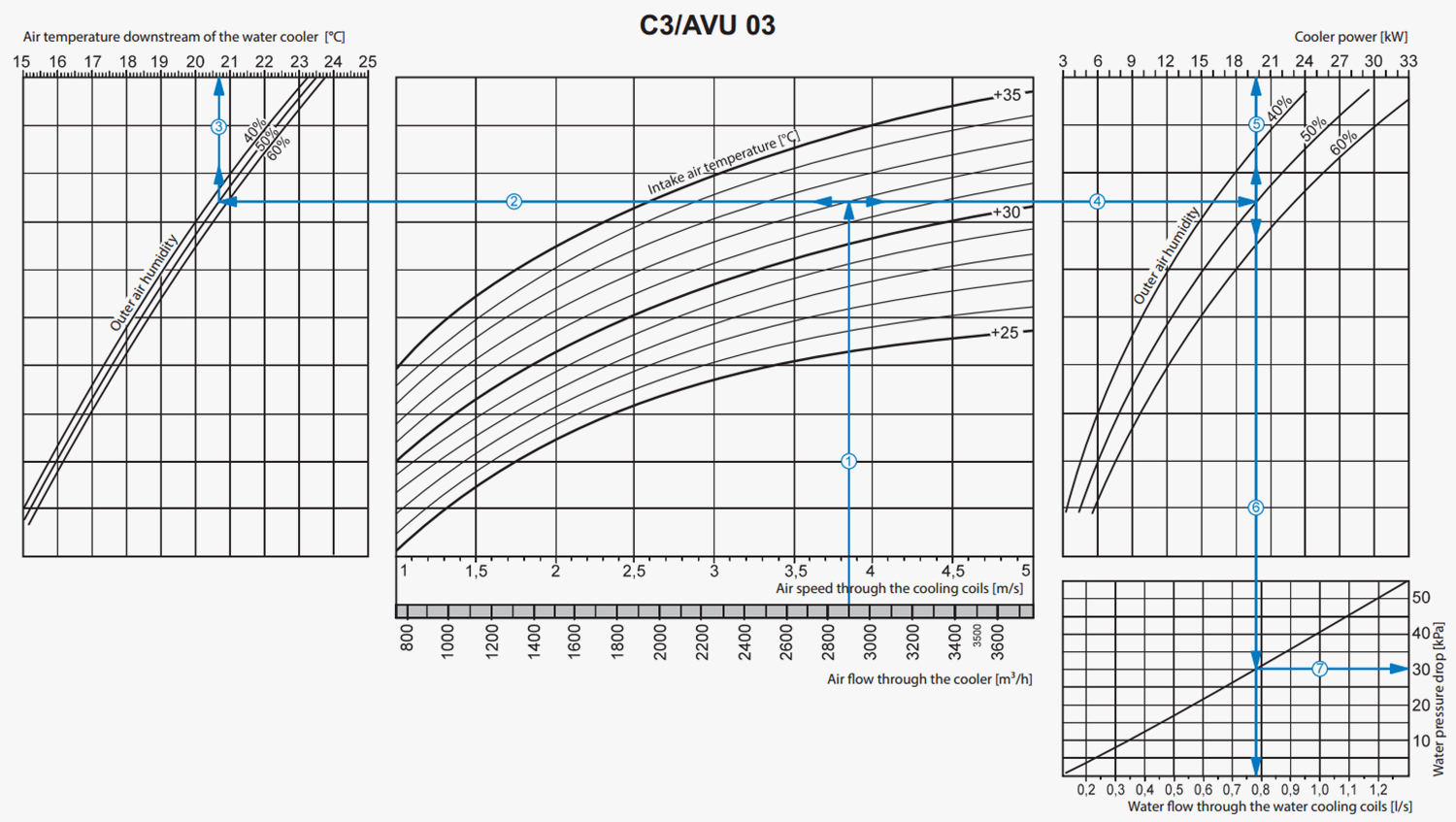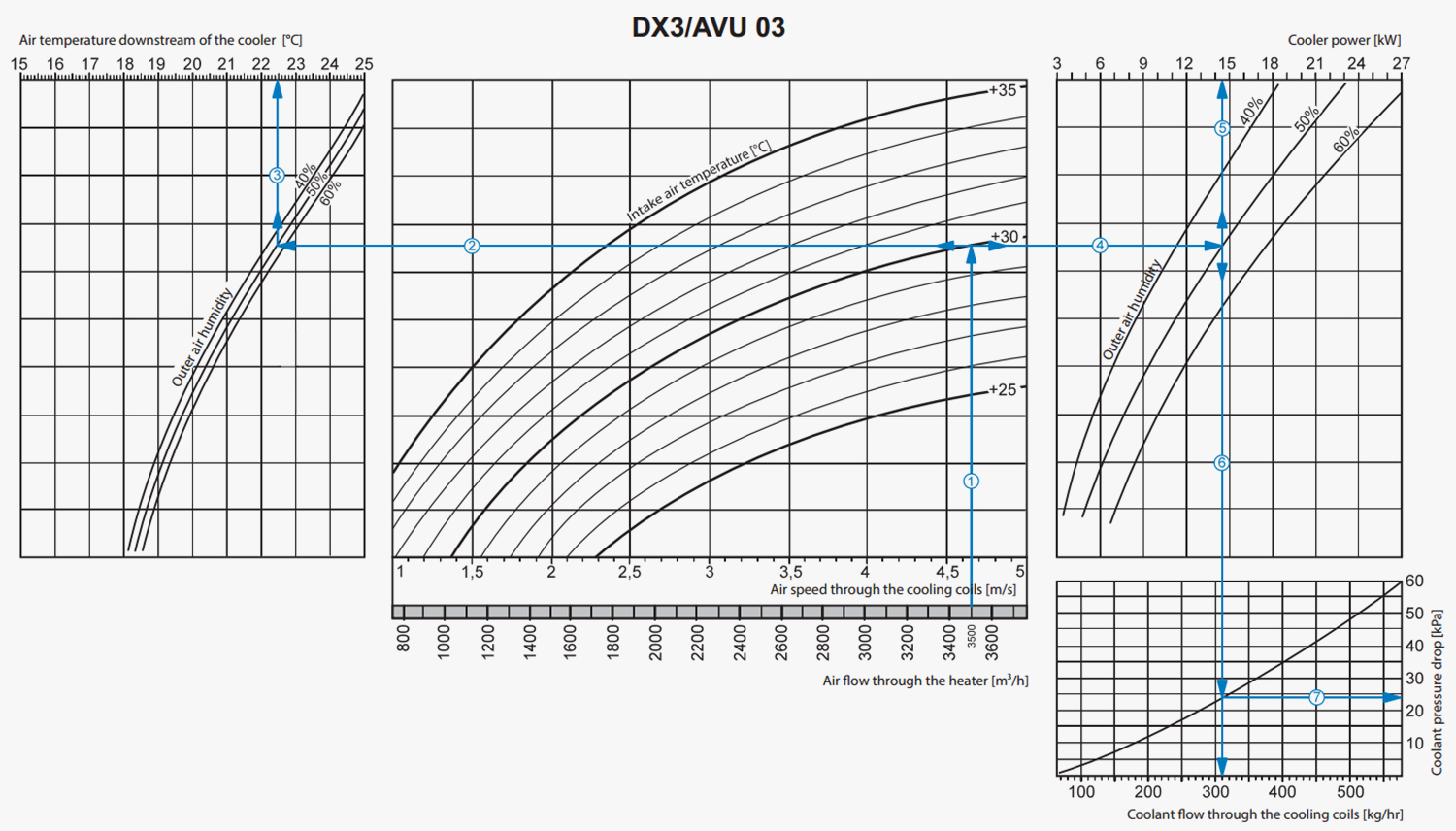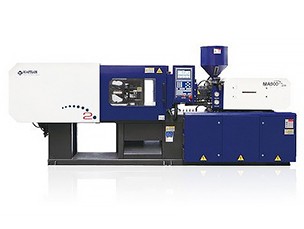Water heater parameters:

Water heater parameters calculation example:
Air Speed. Starting from 3500 m3/h on the air flow scale draw a vertical line 1 till the air speed axis which makes 4.65 m/s..
-
Supply air temperature. Prolong the line 1 of air flow up to the point where it crosses the outside air temperature (-10°C); then draw a horizontal line 2 from this point to the left till crossing water in/out temperature curve (90/70). From this point draw a vertical line 3 to the supply air temperature axis on top of the graphic (+22.5 °C).
-
Heating capacity. Prolong the line 1 up to the point where it crosses the outside air temperature (red line, -10°C) and draw a horizontal line 4 from this point to the right until it crosses water in/out temperature curve (90/70), from here draw a vertical line 5 up to the scale representing the heating coil capacity (42.0 kW).
-
Water flow. Prolong the line down to water flow axis at the bottom of the graphic 6 (0.5 l/s).
-
Water pressure drop. Draw the line 7 from the point where line 6 crosses the black curve to the pressure drop axis. (6.5 kPa).
Water cooler parameters:

Water cooler parameters calculation example:
Air Speed. Starting from 2850 m3/h on the air flow scale draw a vertical line 1 till the air speed axis which makes 3.85 m/s.
-
Supply air temperature. Prolong the line 1 of air flow up to the point where it crosses the outside summer air temperature (+32°C); then draw a horizontal line 2 from this point to the left till crossing intake air humidity curve (50%). From this point draw a vertical line 3 to the air temperature downstream of the cooler axis on top of the graphic (+20.7 °C).
-
Cooling capacity. Prolong the line 1 up to the point where it crosses the summer outside air temperature (+32°C) and draw a horizontal line 4 from this point to the right till crossing intake air humidity curve (50%), from here draw a vertical line 5 up to the scale representing the cooling coil capacity (19.8 kW).
-
Water flow. Prolong the perpendicular line down to water flow axis at the bottom of the graphic 6 (0.78 l/s).
-
Water pressure drop. Draw the line 7 rightwards from the point where the line 6 crosses the curve to the pressure drop axis. (30 kPa).
DX cooler parameters calculation example:

DX cooler parameters calculation example:
Air Speed. Starting from 3500 m3/h on the air flow scale draw a vertical line 1 till the air speed axis which makes 4.65 m/s.
-
Supply air temperature. Prolong the line 1 of air flow up to the point where it crosses the outside summer air temperature (+30°C); then draw a horizontal line 2 from this point to the left till crossing intake air humidity curve (50%). From this point draw a vertical line 3 to the air temperature downstream of the cooler axis on top of the graphic (+22.5 °C).
-
Cooling capacity. Prolong the line 1 up to the point where it crosses the summer outside air temperature (+30°C) and draw a horizontal line 4 from this point to the right till crossing intake air humidity curve (50%), from here draw a vertical line 5 up to the scale representing the cooling coil capacity (14.5 kW).
-
Coolant flow. Prolong the perpendicular line down to coolant flow axis at the bottom of the graphic 6 (310 kg/hr).
-
Coolant pressure drop. Draw the perpendicular line 7 rightwards from the point where the line 6 crosses the curve to the pressure drop axis. (24.0 kPa).


